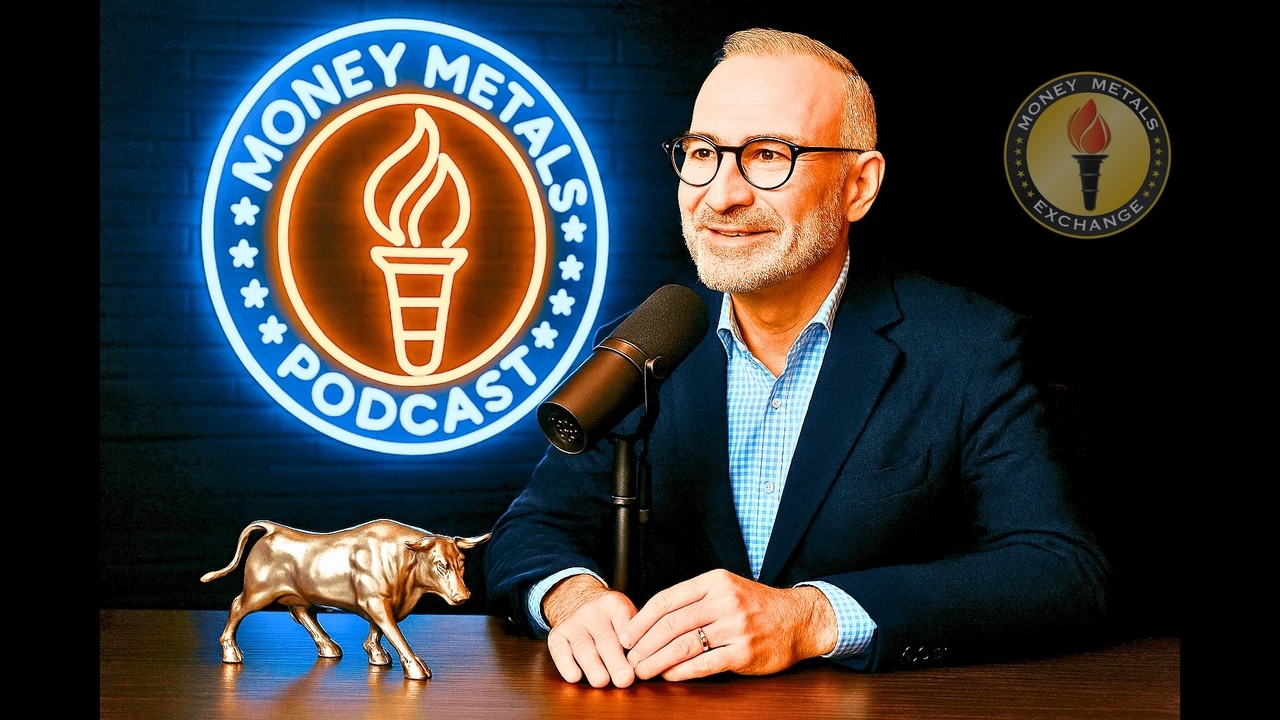(Money Metals News Service) Silver may have recently touched $40 per ounce, intraday, but according to Peter Krauth, author of The Great Silver Bull and publisher of the Silver Stock Investor newsletter, this rally is far from over.
In a wide-ranging interview with Mike Maharrey on the Money Metals Podcast, Krauth discussed the recent silver surge, underlying supply-demand dynamics, and why he believes silver remains deeply undervalued—with much more upside to come.
(Interview Starts Around 7:18 Mark)
Silver Rally Hits $40, Then Consolidates
Silver saw an aggressive rally in mid-2025, reaching a peak of $40 per ounce (intraday), before pulling back to around $37.50. Peter Krauth attributes the breakout to a growing recognition that the silver market is fundamentally undersupplied.
For over a decade, manufacturers, particularly in electronics and solar industries, have been drawing from above-ground stockpiles, delaying the need for fresh mining supply. But those inventories are dwindling.
“I’d say we’re probably somewhere around three-quarters through those stockpiles,” Krauth noted. “There’s private silver out there, but it will only come to market at much higher prices.”
He emphasized that this isn’t the end of the rally. Krauth expects $45 silver by the end of 2025, with a realistic shot at breaking the all-time high of $50 in 2026.
Supply Crunch: A Structural Deficit
According to data from the Silver Institute, the silver market remains in deep deficit. While the 2025 deficit is estimated at 117 million ounces, down slightly from 148 million ounces in 2024, Krauth warns that these figures understate true demand. When physical and ETF investment flows are included, 2025 could end up being the third-largest deficit on record.
He also cited a major uptick in investor interest: June 2025 silver ETF inflows exceeded those for all of 2024.
“Someone’s starting to really pay attention and buy into silver,” Krauth said.
Gold-Silver Ratio Still Signals Undervaluation
Despite the rally, silver remains historically cheap relative to gold. The gold-silver ratio currently hovers around 83-85, far above the long-term average of 55-60. Krauth believes the ratio could compress significantly during the bull run, potentially falling to 40.
“That alone implies a major upside for silver,” he said.
Trade Tensions and Physical Premiums
Krauth also addressed the impact of trade and tariff concerns. While there was initial panic that silver might face import tariffs similar to industrial metals, those fears were unfounded. Still, the threat led to massive flows of silver from London to the U.S., not to exchanges, but to private warehouses—a sign that large institutions were preparing for potential disruptions.
In the process, physical silver premiums rose, lease rates increased, and traders began prioritizing real metal over futures.
“Anyone who wants silver isn’t as comfortable relying on futures anymore,” Krauth observed.
Industrial Demand Rising Fast
Silver is no longer just a monetary metal. Krauth highlighted its expanding industrial use, second only to oil in total applications. From solar panels and electronics to defense systems and EVs, silver demand is exploding.
He pointed to rising military and defense budgets in Europe, noting that Germany and other nations have amended laws to allow for higher defense spending. Silver’s role in drones, missiles, and electronic systems means this trend could add 2–3% more demand, on top of an already tight supply market.
Primary Silver Mining Still Rare
Roughly 75% of silver comes as a byproduct from other mining operations (e.g., zinc, copper). Only 25% comes from primary silver mines. Krauth emphasized that this makes the supply side extremely inelastic.
“Even at $50 silver, miners focused on other metals won’t ramp up silver production; it’s just a bonus for them.”
Worse, some miners might reduce output if silver prices rise, choosing to exploit lower-grade deposits more profitably. This “reverse economics” is why Krauth believes higher prices won’t necessarily bring more silver to market – a key bullish signal.
Gold Leads, Silver Follows & Then Surpasses
Historically, silver lags gold during the early phases of a bull market, only to catch up and often surpass gold in percentage gains.
“In seven of the last nine gold bull markets, silver outperformed,” Krauth said.
As gold continues its upward march, eventually reaching $4,000 or more, he believes attention will shift to silver as the more affordable, higher-upside alternative.
Silver’s Portfolio Role: Underowned and Misunderstood
Citing research from Oxford Economics and the Silver Institute, Krauth highlighted how underowned silver is in global portfolios. While a 6% allocation may be optimal in a medium-risk portfolio, average exposure currently sits below 0.5%.
“That gap alone points to tremendous upside,” he argued. “Even conservative investors should have some silver exposure.”
The Great Silver Bull: A Reference Guide
To cap the conversation, Maharrey praised Krauth’s book The Great Silver Bull as a reference manual for investors. Krauth noted that it’s designed for both beginners and experienced investors, covering silver’s history, investment thesis, and tactical strategies.
He also announced that Ted Butler, a well-known silver analyst, is now collaborating with him on his newsletter, Silver Advisor, available at SilverStockInvestor.com and TheGoldAdvisor.com.

